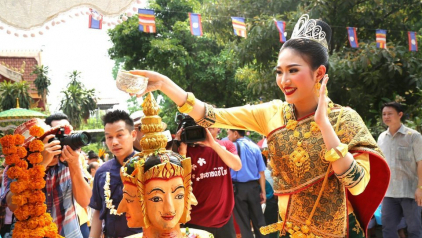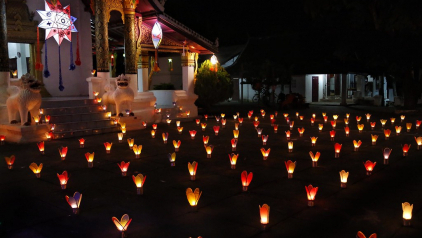Chaul Chnam Thmey, Boun Pi Mai or Songkran for Your Trip in April, 2025?
Ancient Khmer empire owned the enormous area in Southeast Asia and at present, the old land and residents of ancient Khmer empire still stay in many different countries here with their traditional culture.
New Year celebration is the typical event of Khmer culture and also the most important event with Khmers and as affected strongly by Buddhism, this event also called Buddhist New Year. Although, the Khmer New Year is celebrated in many countries in Southeast Asia; however, the events in Cambodia, Laos, and Thailand are the most popular ones and gradually become world-known.
Chaul Chnam Thmey (Khmer - Cambodia New Year)
Up until now, Cambodia is still the kingdom of Khmers with 95% of its population are Khmer. Among Southeast Asia country, Cambodia is the only country which is totally affected by Khmer culture and can keep it almost perfectly. The Khmer New Year or in Cambodia called “Chaul Chnam Thmey” (means “Enter the New Year”). As the most important annual event in Cambodia, Khmer New Year is a public holiday so all Cambodians can spend all their time celebrating.
As a Buddhism country, most of the activities in Khmer New Year here are affected by Buddhism culture – Cambodian national religion. The first 3 days of Khmer New Year is seriously important with Cambodian as they have their own meanings and purposes:
Day 1 - Maha Sangkran
On the first day of Khmer New Year, people will spend time praying in the pagoda or shrine. Normally people will wear traditional customs or at least dress formally then come to the shrine, prostrating to show their respect and gratitude to the Buddha and the gods, thanks to them for giving them a good year.
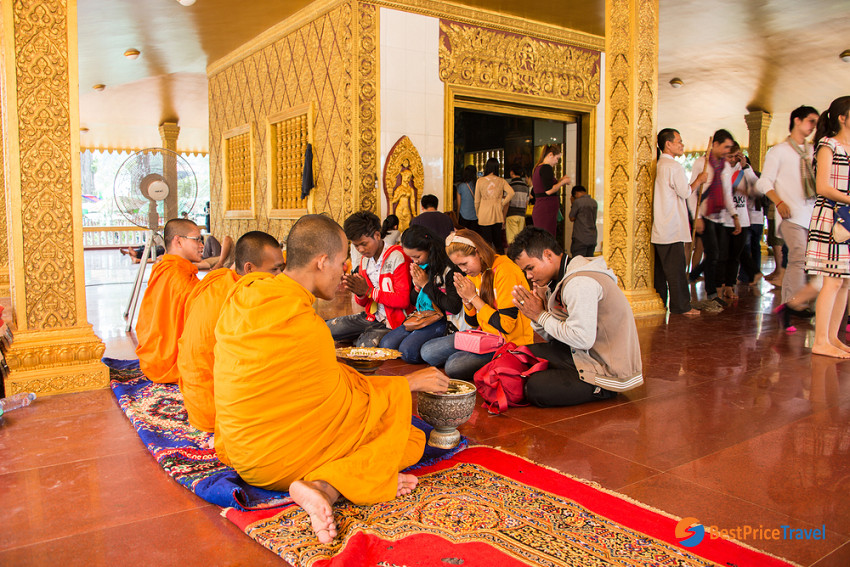
Cambodian come to shrine in Khmer New Year
Day 2 – Virak Vanabat
The second day is like a giveaway day or much more like a sharing day. On this day, Cambodians go out and help other unfortunate people who are the poor, homeless, and servants. This is also the time that Cambodian commemorate their ancestors and dedicate offers to them.
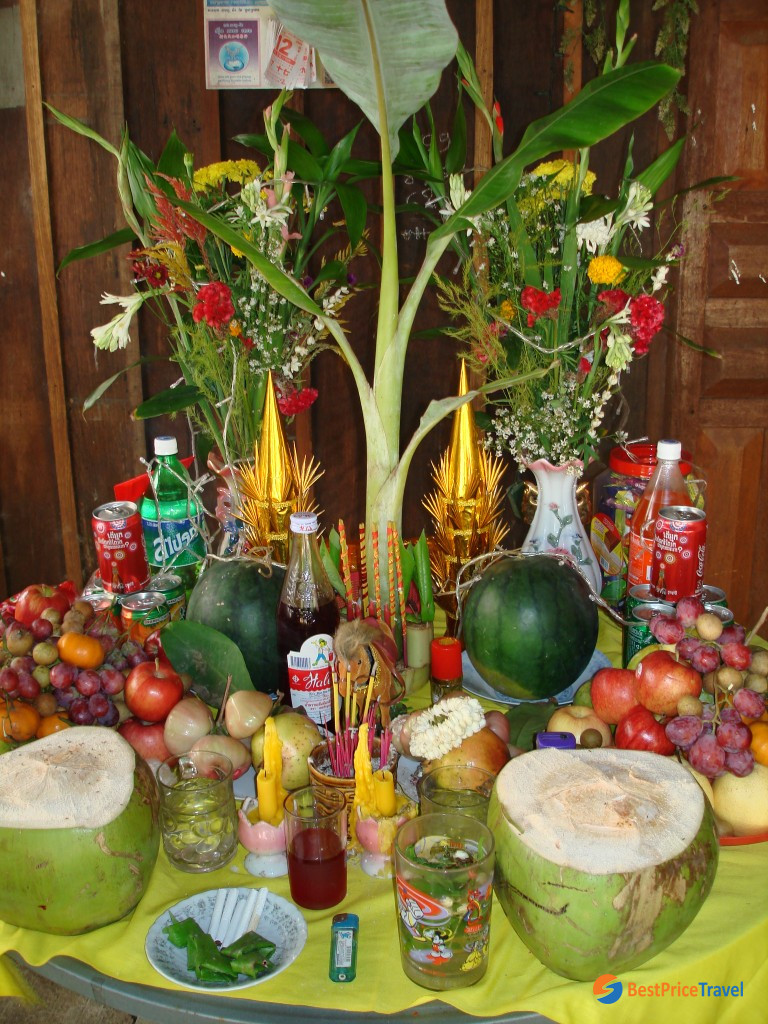
Cambodian offerings for ancestors in Khmer New Year
Day 3 – Vearak Loeng Sak
On the third day of Khmer New Year, Cambodian Buddhists will wash the Buddha statues and also the elders in perfumed water. This ritual is believed to wash away the bad things and bring lucks, prosperity, longevity, and happiness to everyone.
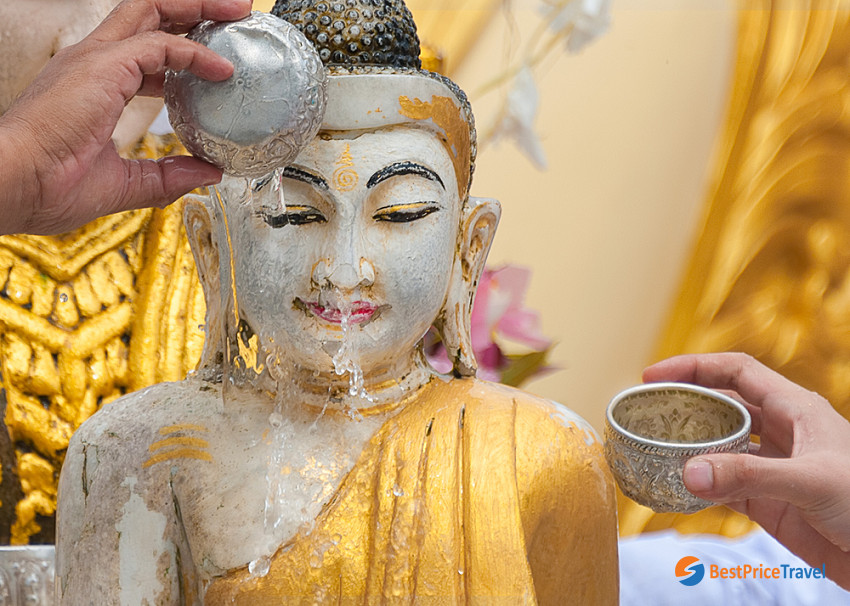
Buddha Statue Bathing in Khmer New Year
If you are finding the authentic Khmer New Year, Cambodia should be the top choice destination. This land is the home of many generations of Khmer from thousands of years ago – the kingdom of the most ancient Khmer Emperors; and obviously, all the traditional cultural values are still kept perfectly here. The world may know a lot about the marvelous Angkor Wat, but Cambodia has more to offer tourists than only a relic. Come to Cambodia and you will have an adventure in a new land with the thick authentic Khmer culture.
Boun Pi Mai (Laos New Year)
Laos New Year is called Bun Pi Mai and just like many other countries in Southeast Asia, this is also the most important event each year in Laos. This event usually happens in 3 days; however, in some places, it may take about 1 week or more (like Luang Prabang for example). Like in Cambodia, 3 days of Laos New Year has its own meaning but not clearly and complicated as the Cambodian New Year.
Day 1 – Sangkhan Luang
The first day is when people clean their house carefully, ready to welcome the luck of the new year. This is also the time they prepare some important things for other days of New Year celebration such as flowers, perfume, and water.
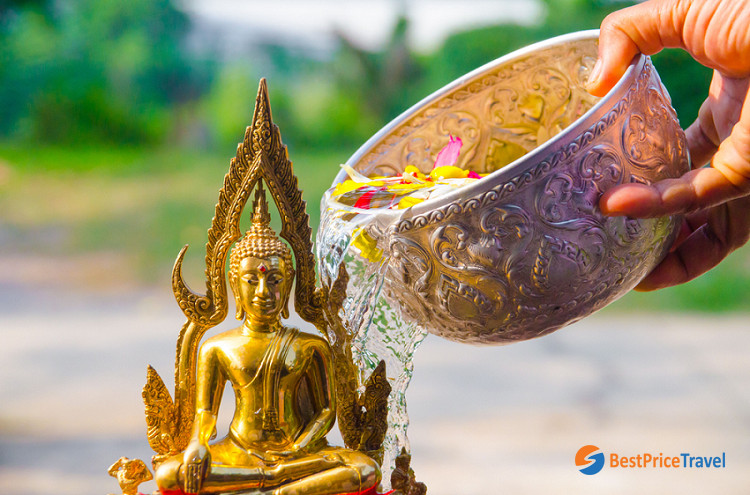
Perfumed water prepared for Buddha statue bathing
Day 2 – Sangkhan Nao
The second day is believed that belongs to no year, neither the old nor the new year, that’s why in Laos, people call it “Sangkhan Nao” which means “Day of no day”.
Day 3 – Sangkhan Kheun Pi Mai
The final day should be considered as the most important day in Laos New Year. In Laos, people believe this is the very first day of the new year and every main activity of New Year celebration will happen on this day. Since the morning, everyone, especially the Buddhists will dress formally in traditional customs and join the Tak bat – offering the alms to the monks, then they bring sand to the temples to build small stupas, decorate them and give them to the monks as merits, in some areas, people also build sand stupas on the beach.
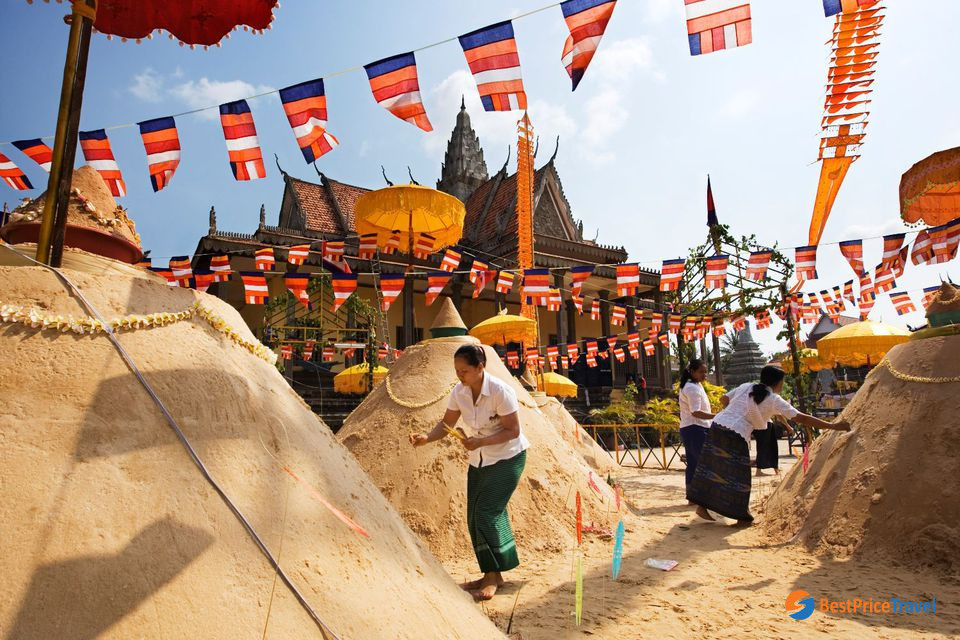
Sand stupas offered to shrines
The most interesting activity in Laos New Year is splashing water. Inspired by the image of bathing the Buddha statue, Laos people believe that if everyone gets soaked in New Year's time, the bad things will be wash away and good new things will come to them. And not only the water, some people will use flour with the same meaning; so if you come to Laos to enjoy the refreshing splashing water festival here in New Year, just note that you will not only get wet but also may become sticky and doughy.
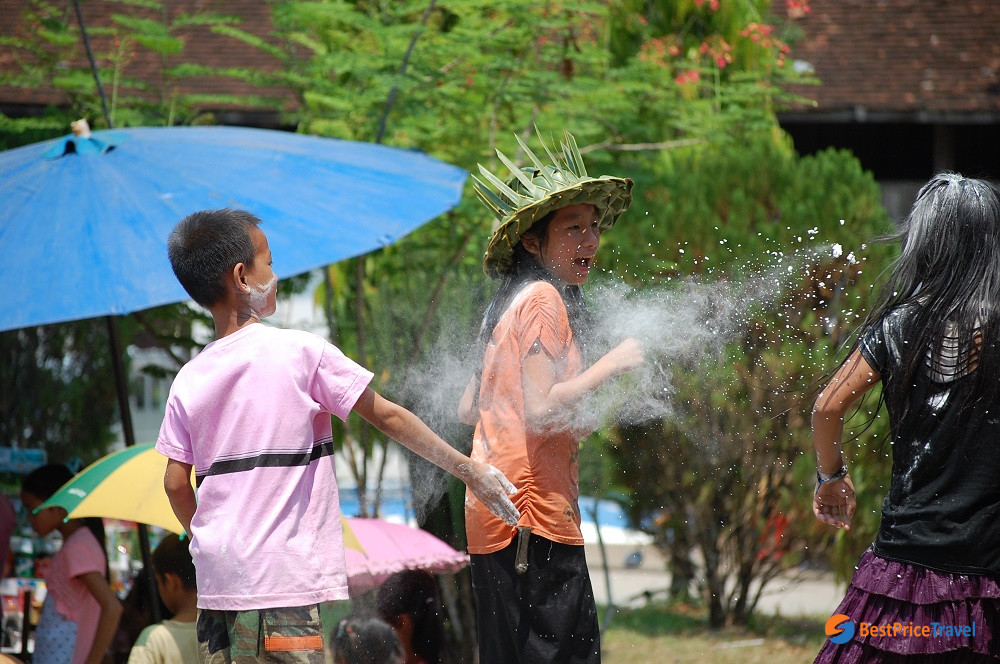
Flour throwing in Laos New Year
Songkran (Thailand New Year)
Many people have heard about the famous “Songkran” festival in Thailand, this word is also used to call the New Year festival in some areas in Laos, but become famous and popular when it is used officially to call the Thai New Year. Different from the 2 above countries, the traditional Songkran is no longer the official New Year time for Thailand (they use the international 1st Jan at present), it is now only a national holiday of Thai and is kept as a part of traditional events.
While in Laos, water splashing is an action with purely religious meaning, in Thailand, it is not just splashing water anymore, it turns into water fighting – joyful activities happened throughout the country and everyone from elders to youngsters, from locals to tourists all join and enjoy its excitement. Actually, as in tradition, in Songkran, Thais people will also go to temples and pray. However, in the nearest decade, water fighting becomes the symbol and the soul of Songkran as it attracts thousands of tourists to come to Thailand and join this event each year.
For more details: Jubilant Water Festivals in Southeast Asia
If you have a plan of enjoying the Songkran festival in Thailand, just be careful as there are so many people join this event and the crowd sometimes went too excited so some people might be injured. Besides, you do not have to bring the water pistol from your hometown, they sell it widely in Thailand; however, mind the price, bargain, and try to not overpay for that toy.
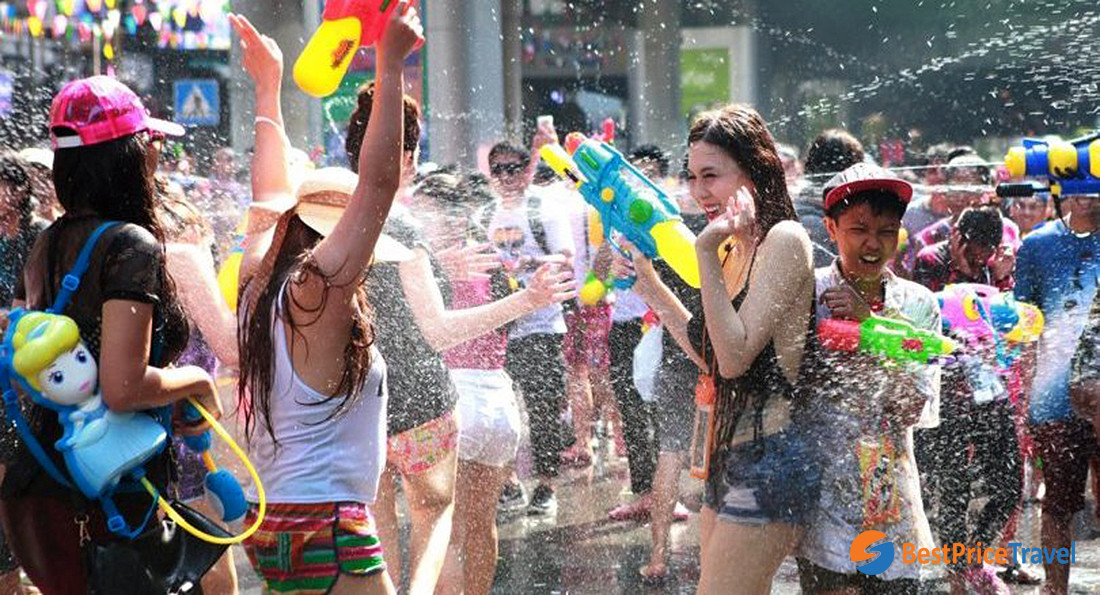
Water fighting in Songkran festival (Thailand)
This year, the Khmer (Buddhist) New Year will take place from 13 April to 16 April. If you want to experience the authentic Khmer culture and join the exciting water fighting festival, book your trip NOW as it is just about one month to the D-day!
MinKJ
(Image source: Internet)

